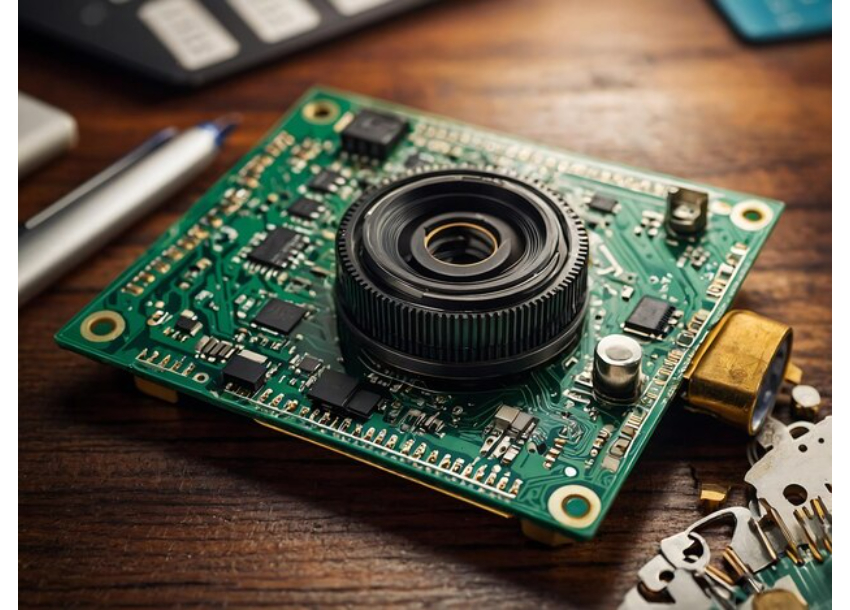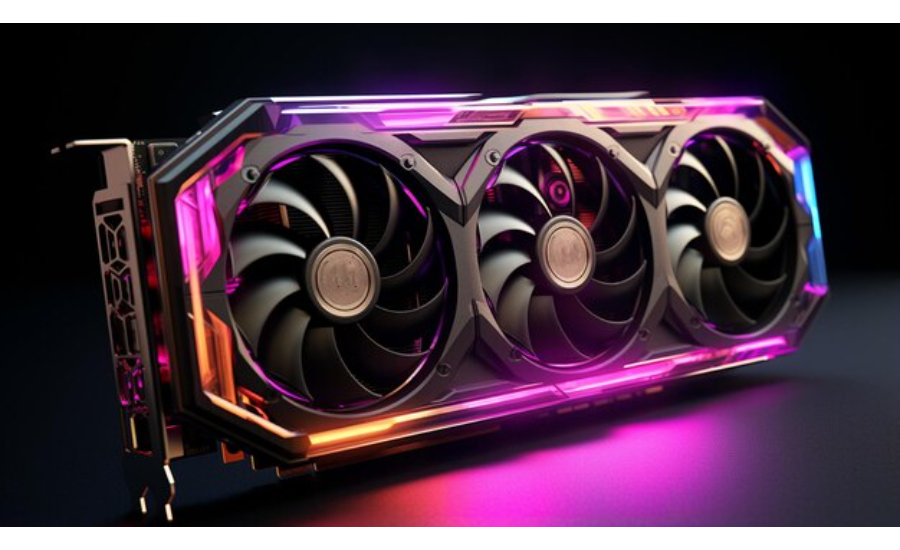When I first built a PC, matching the motherboard and CPU felt tricky. It’s like finding two pieces that fit together perfectly. I’ll guide you through what you need to know to ensure your components work well together.
Motherboard CPU compatibility is essential for a functional PC. Verify that your CPU matches the motherboard’s socket type and chipset to ensure they work together seamlessly. Proper compatibility avoids performance issues and system errors.
In this article, we’ll dive into everything you need to know about motherboard CPU compatibility, from understanding the basic components to avoiding common pitfalls.
Understanding the Basics
What is a Motherboard?
The motherboard is like the main support system of your computer, connecting all its parts and allowing them to work together. It connects all the various components, including the CPU, memory, and peripherals, allowing them to communicate with each other. Imagine it as the central hub where all the parts of your computer come together and connect.
What is a CPU?
The CPU is often called the brain of the computer because it handles all the important tasks and decisions. It handles all the instructions from your software, processes data, and executes tasks. Choosing the right CPU for your needs is crucial, but it’s equally important to ensure it works seamlessly with your motherboard.
The Role of the Socket
Definition and Importance of a Socket
The CPU socket on a motherboard is the spot where the CPU is installed and connects to the board. It’s a specific slot that must match the CPU’s design, as different CPUs have different pin configurations. If the socket doesn’t match, the CPU simply won’t fit.
Common Types of CPU Sockets
There are several types of CPU sockets, and they differ based on the manufacturer and the generation of the CPU. For instance, Intel has used LGA 1200 and LGA 1700 sockets in recent generations, while AMD uses AM4 and the newer AM5. Understanding the type of socket required is the first step in ensuring compatibility.
Chipsets and Their Importance
What is a Chipset?
A chipset is a group of microchips on the motherboard that manage data flow between the CPU, memory, and peripheral devices. It essentially acts as a traffic controller, ensuring that data moves smoothly between the components.
How Chipsets Affect Compatibility
Not all chipsets are created equal. Some support overclocking, while others don’t; some are optimized for gaming, while others are better suited for professional workstations. The chipset can also determine the types of RAM and storage devices you can use, making it a critical factor in your build.
Form Factor Considerations
Definition of Form Factor
The form factor of a motherboard refers to its size and shape, which also determines the number of components it can support. Common motherboard sizes are ATX, Micro-ATX, and Mini-ITX.
Common Motherboard Form Factors
- ATX: The most common form factor, suitable for most builds and offering plenty of space for expansion.
- Micro-ATX: A smaller version of ATX, often used in budget builds but still offering good expandability.
- Mini-ITX: The smallest form factor, ideal for compact builds but with limited expansion options.
Power Requirements and Considerations
Power Delivery Systems
The motherboard’s power delivery system is crucial for ensuring stable and efficient power to the CPU and other components. It includes VRMs (Voltage Regulator Modules) and capacitors that help manage power fluctuations.
Importance of PSU Compatibility
Your Power Supply Unit (PSU) must be compatible with both the motherboard and the CPU, providing sufficient power for all components. It’s essential to choose a PSU with the right connectors and enough wattage to support your system.
BIOS and Firmware Updates
The Role of BIOS in Compatibility
The Basic Input/Output System (BIOS) is firmware stored on the motherboard that initializes hardware during the booting process. It plays a significant role in compatibility, especially when using new or older CPUs.
Updating BIOS for New CPUs
Sometimes, a motherboard might need a BIOS update to support newer CPUs. This process involves downloading the latest firmware from the manufacturer’s website and following specific instructions. Always check for the latest BIOS updates to ensure compatibility and performance.
RAM Compatibility
Understanding Memory Slots and Types
Motherboards come with specific memory slots that support various types of RAM, such as DDR4 or DDR5. The number of slots and the type of RAM supported can affect your system’s performance and upgradability.
Impact of RAM on System Performance
Choosing the right type and amount of RAM is crucial. Incompatible RAM can lead to system instability, while the correct choice can significantly boost performance, especially in multitasking and gaming scenarios.
Expansion Slots and Peripheral Compatibility
PCIe Slots and GPU Compatibility
PCIe (Peripheral Component Interconnect Express) slots are used for adding expansion cards like GPUs (Graphics Processing Units), network cards, and more. The number and type of PCIe slots can affect your system’s expandability and performance, especially if you’re building a gaming or workstation PC.
Other Expansion Options
Apart from PCIe slots, consider other expansion options like M.2 slots for SSDs, USB ports, and additional headers for peripherals. These can enhance your system’s capabilities and provide more flexibility for future upgrades.
Cooling Solutions and Space Considerations
CPU Cooling Options
Adequate cooling is essential for maintaining system stability and longevity. You can opt for air coolers or liquid cooling solutions, depending on your CPU’s power requirements and your case’s space constraints.
Motherboard Layout and Airflow
The layout of the motherboard can affect cooling efficiency. Ensure that your case has good airflow and that components are not obstructing fans or radiators. Proper cable management can also improve airflow and reduce dust buildup.
Brand-Specific Compatibility
Intel vs. AMD Platforms
Intel and AMD offer different platforms with distinct features and socket types. While Intel is known for high clock speeds and strong single-core performance, AMD excels in multi-core performance and offers excellent value for money. Your choice will depend on what you need and how much you’re willing to spend.
Manufacturer-Specific Features
Different motherboard manufacturers offer unique features like enhanced audio, improved power delivery, and advanced BIOS options. Researching these features can help you choose a motherboard that best suits your requirements.
Future-Proofing Your Build
Planning for Upgrades
When building a PC, consider future upgrades. Choose a motherboard and CPU that offer room for growth, such as additional RAM slots, extra PCIe slots, and support for the latest storage technologies.
Choosing Components for Longevity
Spending on good quality parts can actually save you money over time. Look for durable materials, robust power delivery systems, and good warranty terms to ensure your build lasts for years.
Common Compatibility Issues and How to Avoid Them
Identifying and Solving Common Problems
Common compatibility issues include mismatched sockets, incompatible RAM, and insufficient power supply. To avoid these problems, always double-check specifications and consult compatibility lists or tools provided by manufacturers.
Tips for Ensuring Compatibility
- Always refer to the motherboard’s CPU compatibility list.
- Check for BIOS updates and ensure the latest version is installed.
- Verify RAM compatibility with both the CPU and motherboard.
- Ensure the PSU provides sufficient power for all components.
Building and Testing Your System
Assembling Compatible Components
Once you’ve chosen compatible components, it’s time to assemble your system. Follow the motherboard’s manual for installation instructions and ensure all components are securely connected.
Testing for Stability and Performance
After assembly, test your system for stability and performance. Run stress tests on the CPU and GPU, and check temperatures to ensure proper cooling. Also, ensure all peripherals and expansion cards are functioning correctly.
Easy way to check if your motherboard is compatible with a CPU?
To easily check if your motherboard works with a CPU, match the CPU’s socket type with the motherboard’s socket and confirm the motherboard’s chipset supports the CPU.
How To Find Out Which CPU is compatible With Your Motherboard
To find out which CPU is compatible with your motherboard, follow these steps:
- Check the Socket Type: Look at the motherboard’s manual or specifications to identify its socket type (e.g., LGA 1200, AM4). Ensure the CPU matches this socket type.
- Verify the Chipset Support: Consult the motherboard’s documentation or manufacturer’s website to see which CPUs are supported by its chipset. Some chipsets may need BIOS updates to support newer CPUs.
- Review Compatibility Lists: Check the motherboard manufacturer’s CPU compatibility list for confirmed models that work with your motherboard.
What CPU Socket Does My Motherboard Have?
To find out what CPU socket your motherboard has, follow these steps:
- Check the Motherboard Manual: The manual usually lists the socket type.
- Look at the Motherboard Itself: The socket type might be printed near the CPU socket.
- Visit the Manufacturer’s Website: Search for your motherboard model to find detailed specifications.
Identifying the socket type is key for ensuring compatibility with your CPU
FAQs
What should I do if my motherboard and CPU are not compatible?
If your motherboard and CPU are incompatible, you’ll need to replace one of them with a compatible model. Check the motherboard’s CPU compatibility list or use online tools to find a suitable match.
Can I use any CPU with any motherboard?
No, you can’t use any CPU with any motherboard. Compatibility depends on the socket type, chipset, and BIOS version. Always check the specifications before purchasing.
How do I check if a CPU is compatible with my motherboard?
You can check compatibility by referring to the motherboard’s CPU support list, available on the manufacturer’s website. Additionally, online compatibility tools can help verify if a specific CPU works with your motherboard.
Is it possible to upgrade the CPU without changing the motherboard?
Yes, it’s possible if the new CPU is compatible with the existing motherboard’s socket and chipset. However, you may need to update the BIOS to support the new CPU.
How important is the chipset in determining compatibility?
The chipset is crucial as it determines the features and capabilities of the motherboard. It affects everything from CPU compatibility to expansion options and power delivery, making it a key factor in your build.
How do I choose a CPU motherboard?
To choose a CPU motherboard, match the socket type with your CPU, check if the chipset supports it, and consider features like RAM slots and expansion options for future upgrades.
How do I choose a CPU compatible?
To choose a compatible CPU, first check the socket type of your motherboard and ensure it matches the CPU. Next, verify that the CPU is supported by your motherboard’s chipset.
How do I choose the right CPU?
To choose the right CPU:
- Match Socket Type: Ensure the CPU fits your motherboard’s socket.
- Check Performance Needs: Pick a CPU that suits your usage, like gaming or office work.
- Verify Compatibility: Confirm the CPU works with your motherboard’s chipset and BIOS.
- Consider Future Upgrades: Choose a CPU that allows for future improvements if needed.
Can you replace a CPU on the same motherboard?
Yes, you can replace a CPU on the same motherboard if the new CPU fits the socket, is supported by the motherboard, and the cooling system is sufficient for it.
Can a new motherboard work with any type of CPU?
No, a new motherboard cannot work with just any CPU. It must match the CPU’s socket type and be compatible with the CPU’s chipset. Always check these specifications to ensure proper compatibility.
Conclusion
Choosing the right motherboard and CPU is a critical step in building a reliable and efficient PC. By understanding the basics of compatibility, considering future upgrades, and carefully selecting your components, you can create a system that meets your needs and stands the test of time. Remember, the key to a successful build lies in thorough research and attention to detail.


Leave a Reply